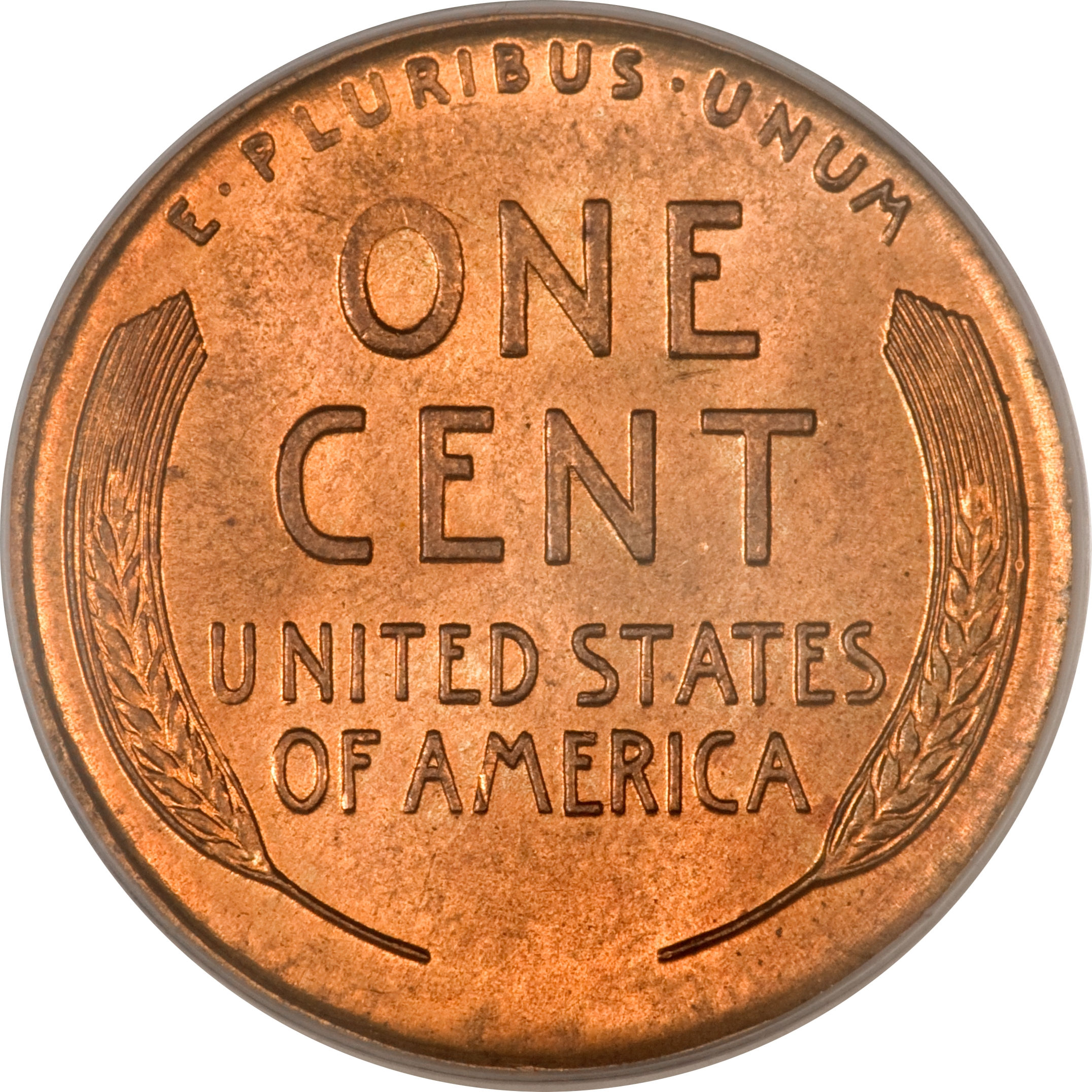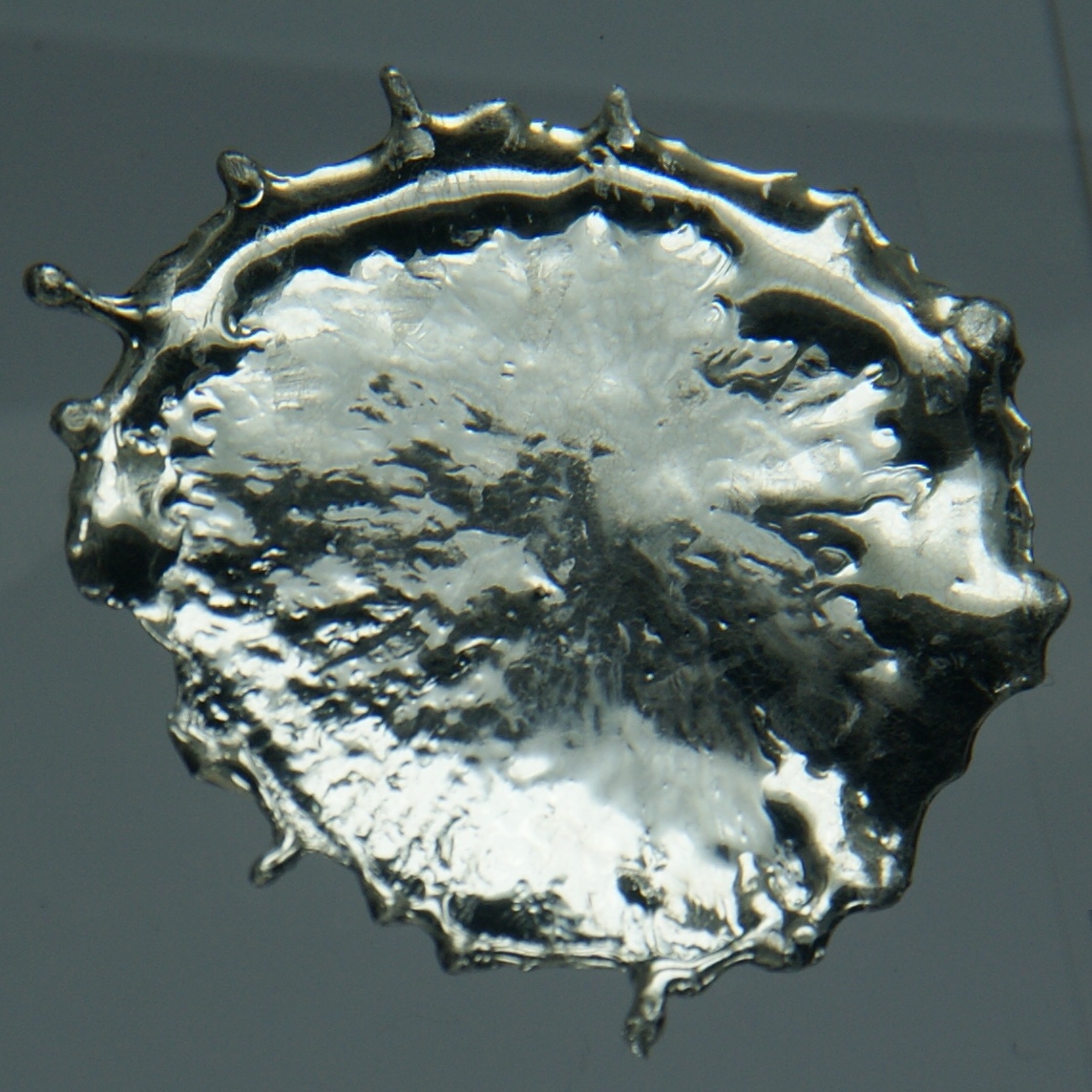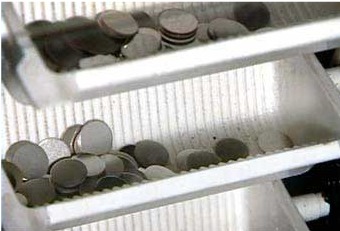|
1943 Steel Cent
1943 steel cents are U.S. one-cent coins that were struck in steel due to wartime shortages of copper. The Philadelphia, Denver, and San Francisco mints each produced these 1943 Lincoln cents. The unique composition of the coin ( low-grade steel coated with zinc, instead of the previously 95%-copper-based bronze composition) has led to various nicknames, such as ''wartime cent'', ''steel war penny'', ''zinc cent'' and ''steelie''. The 1943 steel cent features the same Victor David Brenner design for the Lincoln cent which had been in use since 1909. History Due to wartime needs of copper for use in ammunition and other military equipment during World War II, the United States Mint researched various ways to limit dependence and meet conservation goals on copper usage. After trying out several substitutes (ranging from other metals to plastics) to replace the then-standard bronze alloy, the one-cent coin was minted in zinc-coated steel. This alloy caused the new coins to be m ... [...More Info...] [...Related Items...] OR: [Wikipedia] [Google] [Baidu] |
Lincoln Cent
The Lincoln cent (sometimes called the Lincoln penny) is a one-cent coin that has been struck by the United States Mint since 1909. The obverse or heads side was designed by Victor David Brenner, as was the original reverse, depicting two stalks of wheat (thus "wheat pennies", struck 1909–1958). The coin has seen several reverse, or tails, designs and now bears one by Lyndall Bass depicting a Union shield. All coins struck by the United States government with a value of of a dollar are called cents because the United States has always minted coins using decimals. The penny nickname is a carryover from the coins struck in England, which went to decimals for coins in 1971. In 1905, sculptor Augustus Saint-Gaudens was hired by the Mint to redesign the cent and the four gold coins, which did not require congressional approval. Two of Saint-Gaudens's proposed designs for the cent were eventually adapted for the gold pieces, but Saint-Gaudens died in before submitting additional des ... [...More Info...] [...Related Items...] OR: [Wikipedia] [Google] [Baidu] |
United States Dollar
The United States dollar ( symbol: $; code: USD; also abbreviated US$ or U.S. Dollar, to distinguish it from other dollar-denominated currencies; referred to as the dollar, U.S. dollar, American dollar, or colloquially buck) is the official currency of the United States and several other countries. The Coinage Act of 1792 introduced the U.S. dollar at par with the Spanish silver dollar, divided it into 100 cents, and authorized the minting of coins denominated in dollars and cents. U.S. banknotes are issued in the form of Federal Reserve Notes, popularly called greenbacks due to their predominantly green color. The monetary policy of the United States is conducted by the Federal Reserve System, which acts as the nation's central bank. The U.S. dollar was originally defined under a bimetallic standard of (0.7735 troy ounces) fine silver or, from 1837, fine gold, or $20.67 per troy ounce. The Gold Standard Act of 1900 linked the dollar solely to gold. From 1934, it ... [...More Info...] [...Related Items...] OR: [Wikipedia] [Google] [Baidu] |
Bronze
Bronze is an alloy consisting primarily of copper, commonly with about 12–12.5% tin and often with the addition of other metals (including aluminium, manganese, nickel, or zinc) and sometimes non-metals, such as phosphorus, or metalloids such as arsenic or silicon. These additions produce a range of alloys that may be harder than copper alone, or have other useful properties, such as ultimate tensile strength, strength, ductility, or machinability. The three-age system, archaeological period in which bronze was the hardest metal in widespread use is known as the Bronze Age. The beginning of the Bronze Age in western Eurasia and India is conventionally dated to the mid-4th millennium BCE (~3500 BCE), and to the early 2nd millennium BCE in China; elsewhere it gradually spread across regions. The Bronze Age was followed by the Iron Age starting from about 1300 BCE and reaching most of Eurasia by about 500 BCE, although bronze continued to be much more widely used than it is in mod ... [...More Info...] [...Related Items...] OR: [Wikipedia] [Google] [Baidu] |
Antimony
Antimony is a chemical element with the symbol Sb (from la, stibium) and atomic number 51. A lustrous gray metalloid, it is found in nature mainly as the sulfide mineral stibnite (Sb2S3). Antimony compounds have been known since ancient times and were powdered for use as medicine and cosmetics, often known by the Arabic name kohl. The earliest known description of the metal in the West was written in 1540 by Vannoccio Biringuccio. China is the largest producer of antimony and its compounds, with most production coming from the Xikuangshan Mine in Hunan. The industrial methods for refining antimony from stibnite are roasting followed by reduction with carbon, or direct reduction of stibnite with iron. The largest applications for metallic antimony are in alloys with lead and tin, which have improved properties for solders, bullets, and plain bearings. It improves the rigidity of lead-alloy plates in lead–acid batteries. Antimony trioxide is a prominent additive for halo ... [...More Info...] [...Related Items...] OR: [Wikipedia] [Google] [Baidu] |
Numismatic Guaranty Corporation
Numismatic Guaranty Company (NGC) is an international third-party coin grading and certification service based in Sarasota, Florida. It has certified more than 50 million coins. NGC certification consists of authentication, grading, attribution, and encapsulation in clear plastic holders. NGC is a subsidiary of Certified Collectibles Group (CCG), which owns six collectible certification services and is in turn owned by Blackstone, a multibillion dollar New York City hedge fund. History NGC was founded in 1987 in Parsippany, N.J. as one of the first independent third-party coin grading companies. In 1995, NGC was named the official grading service of the ANA, though this is purely for marketing purposes as the ANA does not encapsulate coins in its collection, and those that are encapsulated are a mix of donated coins by different services including rivals such as PCGS. NGC commenced operations at its new location in Sarasota, Florida in 2002. That same year, NGC was named the ... [...More Info...] [...Related Items...] OR: [Wikipedia] [Google] [Baidu] |
Vanadium
Vanadium is a chemical element with the symbol V and atomic number 23. It is a hard, silvery-grey, malleable transition metal. The elemental metal is rarely found in nature, but once isolated artificially, the formation of an oxide layer ( passivation) somewhat stabilizes the free metal against further oxidation. Spanish scientist Andrés Manuel del Río discovered compounds of vanadium in 1801 in Mexico by analyzing a new lead-bearing mineral he called "brown lead". Though he initially presumed its qualities were due to the presence of a new element, he was later erroneously convinced by French chemist Hippolyte Victor Collet-Descotils that the element was just chromium. Then in 1830, Nils Gabriel Sefström generated chlorides of vanadium, thus proving there was a new element, and named it "vanadium" after the Scandinavian goddess of beauty and fertility, Vanadís (Freyja). The name was based on the wide range of colors found in vanadium compounds. Del Rio's lead mineral was ... [...More Info...] [...Related Items...] OR: [Wikipedia] [Google] [Baidu] |
Tin 1943 Lincoln Cent
Tin is a chemical element with the symbol Sn (from la, stannum) and atomic number 50. Tin is a silvery-coloured metal. Tin is soft enough to be cut with little force and a bar of tin can be bent by hand with little effort. When bent, the so-called "tin cry" can be heard as a result of twinning in tin crystals; this trait is shared by indium, cadmium, zinc, and mercury in the solid state. Pure tin after solidifying presents a mirror-like appearance similar to most metals. In most tin alloys (such as pewter) the metal solidifies with a dull gray color. Tin is a post-transition metal in group 14 of the periodic table of elements. It is obtained chiefly from the mineral cassiterite, which contains stannic oxide, . Tin shows a chemical similarity to both of its neighbors in group 14, germanium and lead, and has two main oxidation states, +2 and the slightly more stable +4. Tin is the 49th most abundant element on Earth and has, with 10 stable isotopes, the larges ... [...More Info...] [...Related Items...] OR: [Wikipedia] [Google] [Baidu] |
Planchet
A planchet is a round metal disk that is ready to be struck as a coin. An older word for planchet is flan. They are also referred to as blanks. History The preparation of the flan or planchet has varied over the years. In ancient times, the flan was heated before striking because the metal that the coin dies were made of was not as hard as dies today, and the dies would have worn faster and broken sooner had the flan not been heated to a high temperature to soften it. An unusual method was used to mint the one-sided, bowl-shaped ''pfennigs'' of the Holy Roman Empire. The planchet used for these so-called ''Schüsselpfennigs'' was larger than the coin die itself. The coins were made by striking with only one upper die on the larger planchet. As a result, the perimeter of the planchet was pressed upwards in the shape of a bowl or plate. Until the 18th century they were minted mainly in the Harz Mountains. The curved shape of the pfennig was very useful for handling small change ... [...More Info...] [...Related Items...] OR: [Wikipedia] [Google] [Baidu] |
1955 Doubled Die Cent
Events January * January 3 – José Ramón Guizado becomes president of Panama. * January 17 – , the first Nuclear marine propulsion, nuclear-powered submarine, puts to sea for the first time, from Groton, Connecticut. * January 18–January 20, 20 – Battle of Yijiangshan Islands: The Chinese Communist People's Liberation Army seizes the islands from the Republic of China (Taiwan). * January 22 – In the United States, The Pentagon announces a plan to develop intercontinental ballistic missiles (ICBMs), armed with nuclear weapons. * January 23 – The Sutton Coldfield rail crash kills 17, near Birmingham, England. * January 25 – The Presidium of the Supreme Soviet of the Soviet Union announces the end of the war between the USSR and Germany, which began during World War II in 1941. * January 28 – The United States Congress authorizes President Dwight D. Eisenhower to use force to protect Taiwan, Formosa from the People's Republic of China. February * February ... [...More Info...] [...Related Items...] OR: [Wikipedia] [Google] [Baidu] |
Crown Gold
Crown gold is a 22 karat (kt) gold alloy used in the crown coin introduced in England in 1526 (by Henry VIII). In this alloy, the proportion of gold is 22 parts out of 24 (91.667% gold)—and is appreciably less prone to wear than the softer 23 kt gold of earlier gold sovereigns—an important point for coins intended for everyday use in circulation. Alloying metal The alloying metal in England was, and is, traditionally restricted to copper. This is still used for the current British gold sovereign. An exception was for the gold sovereigns of 1887, when 1.25% silver, replacing the same weight of copper, was used to gain a better reproduction image of Queen Victoria for the Golden Jubilee of her reign. Elsewhere, both copper and silver have been used in varying proportions. Circulating coins In the United States until 1834, gold circulating coins were minted in 22 kt. crown gold—although using about 6% silver as well as copper. From 1834, the fineness of U.S. coin gold was decr ... [...More Info...] [...Related Items...] OR: [Wikipedia] [Google] [Baidu] |
Galvanization
Galvanization or galvanizing (American and British English spelling differences, also spelled galvanisation or galvanising) is the process of applying a protective zinc coating to steel or iron, to prevent rusting. The most common method is hot-dip galvanization, hot-dip galvanizing, in which the parts are submerged in a bath of hot, molten zinc. Protective action The zinc coating, when intact, prevents corrosive substances from reaching the underlying iron. Additional electroplating such as a chromate conversion coating may be applied to provide further Passivation (chemistry)#Surface passivation, surface passivation to the substrate material. History and etymology The earliest known example of galvanized iron was encountered by Europeans on 17th-century Indian armour in the Royal Armouries Museum collection. The term "galvanized" continues to be used metaphorically of any stimulus which results in activity by a person or group of people. In modern usage, the term "galva ... [...More Info...] [...Related Items...] OR: [Wikipedia] [Google] [Baidu] |









